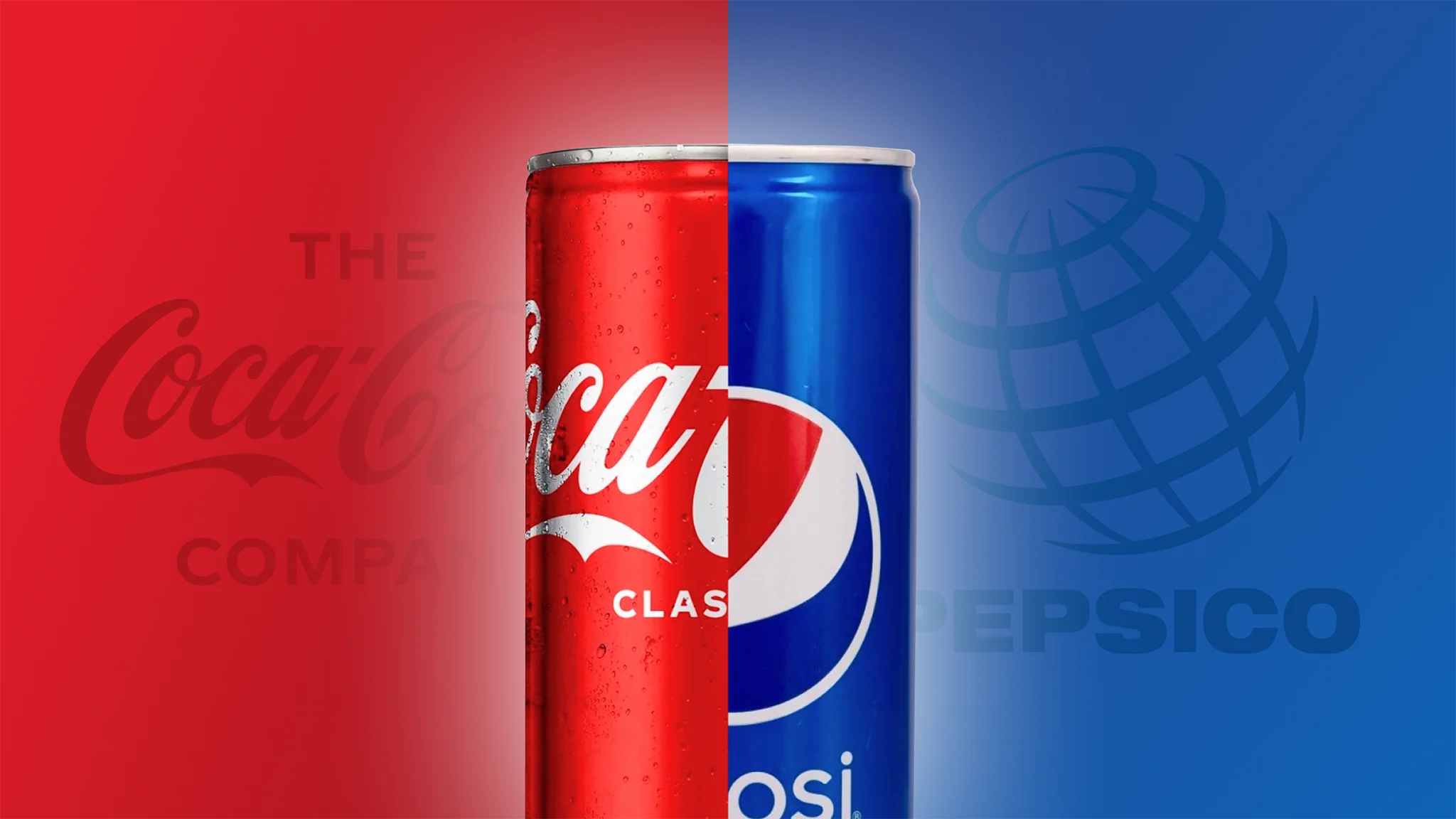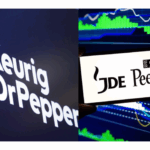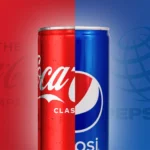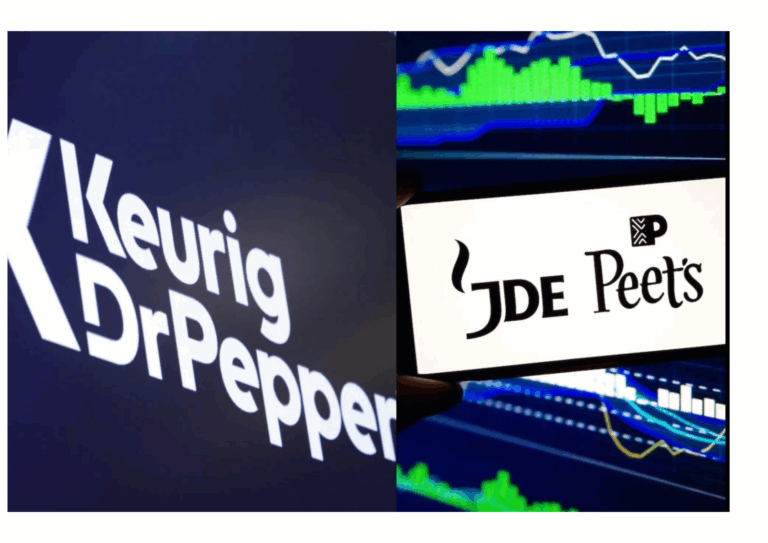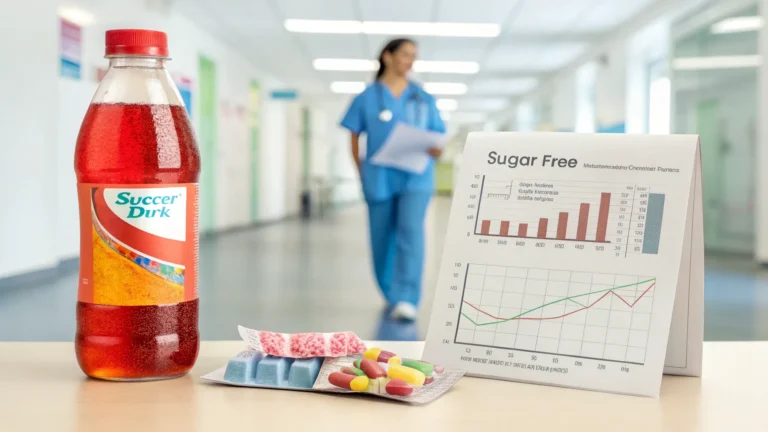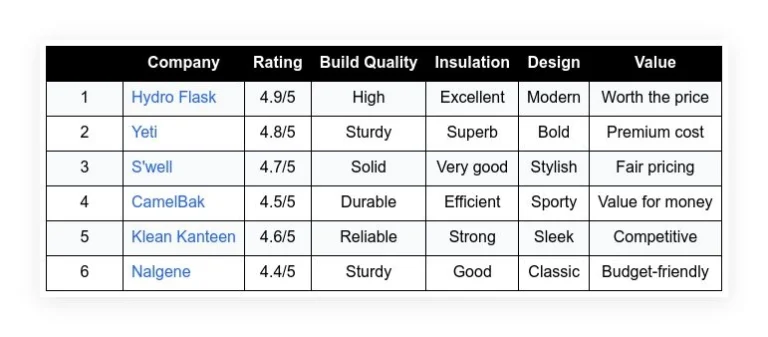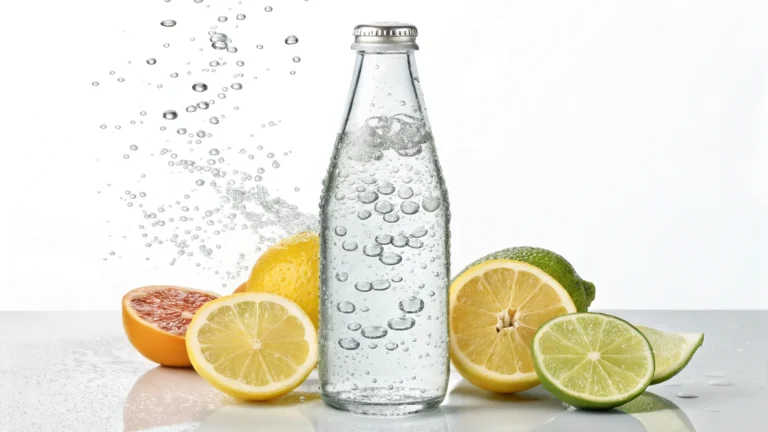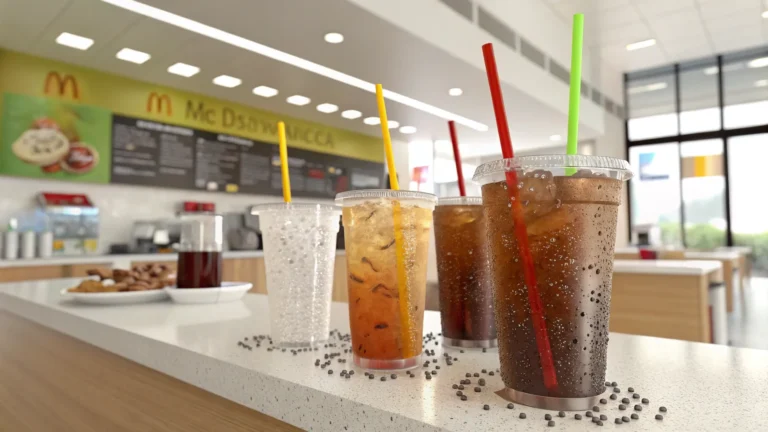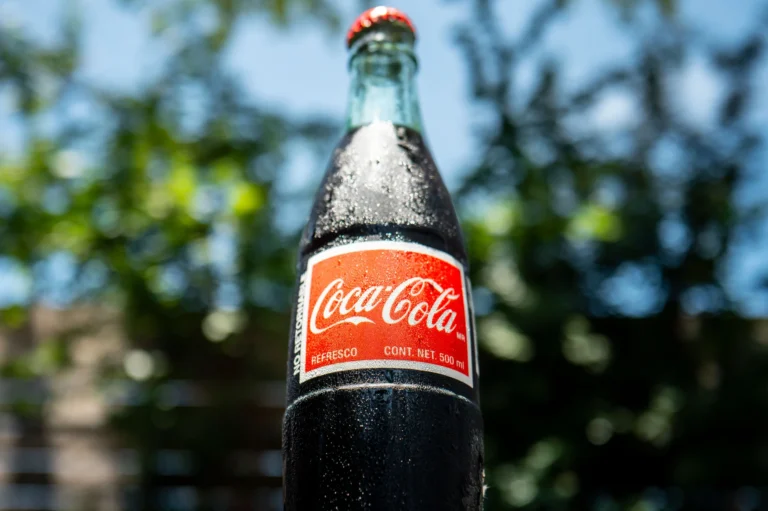The rise of a unique beverage trend has been reshaping restaurant menus across the country. A once humble soft drink is now reimagined as a custom, visually appealing concoction known as “dirty soda.” Combining familiar fizzy soda with flavorful syrups, creamers, and fruit elements, this innovation offers a twist that has captured both the taste buds and attention of many.
A New Twist on a Classic Beverage
Over the past decade, a shift in drink culture has sparked interest among restaurateurs and consumers alike. The traditional soda is no longer just a sugary drink; it has evolved into a creative medium for self-expression and culinary fun. What began as a quirky indulgence in certain parts of the country has now grown into a significant trend that even major beverage companies are eager to join.
Initially popularized in Utah during the 2010s, dirty soda gained fame through local chains that mixed traditional sodas with creamers to offer a sweet and creamy twist. This simple idea quickly took on a life of its own and provided a fresh alternative to typical beverage choices.
The Role of Social Media in Shaping Trends
Social media platforms have played a big part in turning dirty soda into a national phenomenon. The trend exploded online when a well-known young musician was seen with a large cup of a creatively mixed soda drink. Fans rushed to digital platforms to share their own recipes and unique creations.
- Customers experiment with a mix of syrups, creamers, and fruit additives.
- Creative drink recipes are shared widely online with photos and videos.
- The visual appeal of these beverages makes them popular for social media posts.
These online discussions and shared images have encouraged drinkers to explore a variety of flavor combinations. The result has been a strong community of enthusiasts eager to try new versions of their favorite soda. The creative process of mixing these beverages has even led to friendly competition among local shops and national chains.
Local Culture and Community Appeal
Dirty soda first captured hearts in Utah, a state known for its unique cultural values and restrictions on certain beverages. In many local communities, especially those where traditional coffee and alcoholic drinks are less common, dirty soda emerged as both a morning pick-me-up and an evening social treat. This dual-purpose beverage quickly became a staple in daily routines.
Local cafés and soda shops evolved into community hubs where residents could gather to enjoy a beverage that served as a substitute for both coffee and alcohol. One magazine highlighted that these shops provide “the dual role of the morning Starbucks fix and the happy hour gathering spot for a population denied both of these indulgences.” With dirty soda, consumers found a way to enjoy a flavorful and satisfying treat without relying on more traditional options.
Big Beverage Companies Take Notice
With the trend now visible on a national scale, major beverage companies have decided to take action. Recognizing the growing demand, industry giants are launching their own versions of custom sodas. Coca-Cola, for example, has introduced limited-time offerings that include flavor rims, syrups, and dairy additions. The aim is to breathe new life into classic drinks like Sprite, Fanta, and Coca-Cola itself.
“It’s not a fad, it’s a trend,” stated Megan Tallman, vice president of Coca-Cola Freestyle and Foodservice Innovation at Coca-Cola.
Megan Tallman explained that the shifting consumer preferences have encouraged the company to innovate on its age-old recipes. This move is designed to tap into the growing market for customized drinks that are both consumer-friendly and visually appealing. The effort signals that even longstanding beverage brands are willing to experiment with tried-and-true favorites.
Pepsi Joins the Movement
Pepsi is also stepping up its game to capture a piece of this lucrative market. The company has introduced a line of premium sodas called Drips. This series of blend-style drinks is designed for those who enjoy a mixology approach to their soft drinks. At a major industry show in Chicago, Pepsi presented various new drink creations that have quickly caught the public’s interest.
Some of the inventive combinations include flavors like Strawberry Basil Starry, Lipton Mango Horchata, and a s’mores version that uses Pepsi Zero Sugar as its base. These mixtures not only refresh the palate but also offer new ways of experiencing well-known brands. Scott Finlow, global CMO of foodservice at Pepsi, mentioned that the creations use recognizable brands, which is important to their collaborators in the foodservice industry.
Impact on the Restaurant Scene
Dirty soda has had a significant effect on the way restaurants and cafes approach their drink menus. Now, instead of simply offering the same old fizzy drink, many eateries are redesigning their beverage options to include creative, premium offerings. This change is driven by a growing consumer desire for drinks that are both flavorful and Instagram-ready.
The move is not just about aesthetics; it is also linked to a stronger desire for personalization. Consumers want beverages that reflect their tastes and can serve as conversation starters. The customizable nature of dirty soda allows for experimentation. As a result, restaurants are finding it beneficial to look at sodas as both a visual and taste-driven experience.
Integration in Every Meal
In many local communities, particularly where traditional beverage choices are limited, dirty soda has filled an important gap. For residents who might not have access to coffee or alcoholic drinks, dirty soda offers a refreshing alternative. Many businesses have even turned their soda shops into community gathering places that serve as both a morning ritual and an evening indulgence.
This trend has fostered community bonds, with local spots evolving into social hubs where friends and neighbors can connect. In a world where beverage choices have often been limited by certain cultural practices, dirty soda provides a welcome and inclusive option for a broad range of consumers.
Why Consumers are Drawn to Customized Sodas
At its core, the appeal of dirty soda lies in its customization. Consumers today are looking for ways to express their individuality even in the little things, such as the beverages they choose. Mixing a fizzy base with flavorful syrups, creamers, and frothy toppings allows customers to create a drink that feels personal and unique.
The possibility of experimenting with different combinations attracts many, particularly those who enjoy trying new flavors or showcasing their creative skills on social channels. The trend is not limited to a specific demographic; it has crossed age, lifestyle, and cultural boundaries, resonating with anyone in search of a novel refreshment.
Market Shifts in Beverage Preferences
Industry shifts are evident as major soft drink companies explore ways to reinvent their products. Traditional sodas, once seen as the standard go-to, are now replete with new ingredients and playful twists. These changes mark a strategic alteration in how established brands respond to evolving consumer demands.
By collaborating with restaurants and concurrently launching limited-time offerings, beverage companies are showing that they are willing to refresh their approach. The careful mix of premium ingredients with familiar flavors pioneers a new chapter in soft drink offerings. The goal is to satisfy both nostalgic tastes and modern, adventurous palates.
Support and Adaptation From the Industry
Major industry players view the dirty soda trend as an opportunity rather than a fleeting outburst. Both Coca-Cola and Pepsi are adapting to meet consumer preferences head-on. Their efforts to create enhanced versions of long-standing favorites indicate a commitment to staying relevant and engaging in the ever-changing market.
The work done by teams such as those led by Megan Tallman and Scott Finlow suggests that big brands are not opposed to change. They are instead ready to invest in innovative concepts that can refresh consumer perceptions and drive interest in classic products.
These initiatives illustrate how companies shift strategies to link familiar products with fresh experiences. By introducing mixology-style options, they blur the line between fast-food convenience and specialty offerings typically found in artisan cafés. This integration has opened up a new pathway for both brands and consumers to enjoy reinvented versions of popular beverages.
Creative Experimentation and Flavor Innovation
Restaurants and beverage shops alike are experimenting with a variety of ingredients to create the ideal dirty soda. The mix can include fruit syrups, dairy elements, and even unique flavor combinations that draw inspiration from popular mixology trends. The ultimate goal is to deliver a drink that feels both innovative and accessible.
Examples of popular flavors include Blue Raspberry, a flavor with a long-standing history, and mango, which is favored for its bright, appealing look. These drinks are designed not only to please the palate but also to create visual excitement that encourages people to share their experiences online.
Consumer Reactions and Future Outlook
Early reactions to the dirty soda trend have been overwhelmingly positive. Consumers appreciate the playful twist on a familiar beverage and enjoy the freedom to craft their own signature drinks. Social media continues to fuel the trend, as users share images and recipes of their customized sodas, inspiring others to follow suit.
The future of dirty soda seems secure as more restaurants and large beverage companies adopt this creative approach. As the trend moves from a local peculiar indulgence to a nationally recognized beverage innovation, restaurateurs and soft drink makers are expected to invest in new variations that cater to diverse consumer tastes.
Key Takeaways for Restaurants and Beverage Enthusiasts
- Dirty soda offers a mix of traditional soda with creative add-ins like syrups and creamers.
- The trend began in Utah and quickly caught on thanks to social media.
- Major brands such as Coca-Cola and Pepsi are rolling out innovative products to join the trend.
- Consumers enjoy the customizable nature of these drinks, which fits modern preferences.
- Restaurants are turning these beverages into key attractions on their menus.
The creative spirit behind dirty soda has opened a new chapter in the food and beverage industry. The trend shows that even familiar products can be transformed into exciting offerings with a few clever twists. It appeals to customers looking for both taste and an opportunity to share their experiences on social media.
In Conclusion
The emergence of dirty soda reflects a broader shift in consumer behavior. Restaurants and beverage brands are rethinking traditional products to deliver a more personalized and fun experience. This trend has captured attention by offering an alternative to standard beverages, combining beloved flavors with a creative twist.
With major brands adapting their menus and offering limited-time creations, dirty soda has cemented its place in modern drink culture. The trend not only satisfies cravings but also paves the way for more creative culinary endeavors in the foodservice industry. As dirty soda continues to gain traction, it offers a vivid example of how a simple idea can transform everyday experiences into something new and engaging.
For both restaurant owners and beverage enthusiasts, this development invites more experimentation and a chance to enjoy a refreshing update of a time-honored drink. It serves as a vibrant reminder that innovation can thrive in unexpected places, sparking new conversations and shared experiences at dining tables and social media feeds alike.

